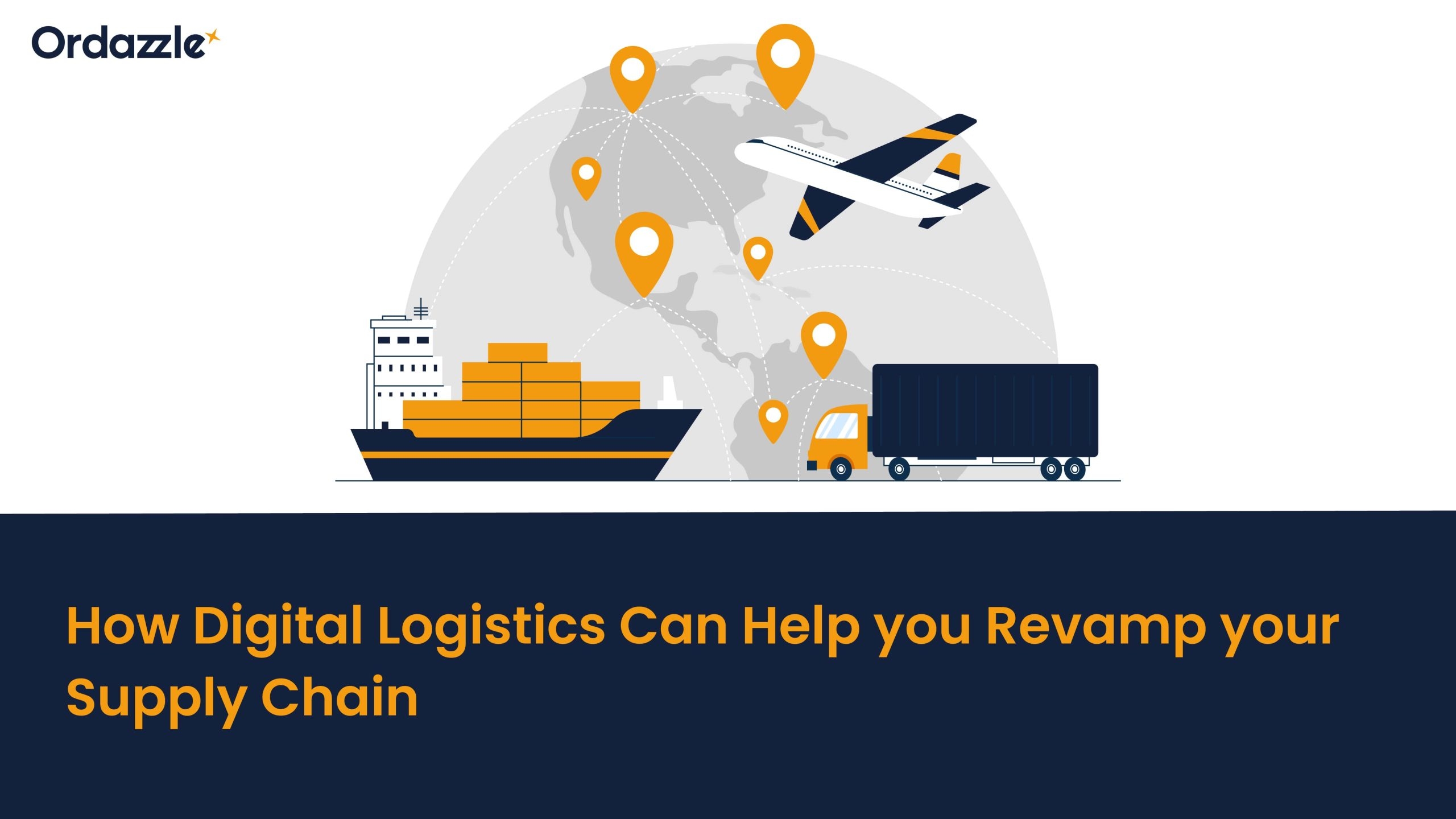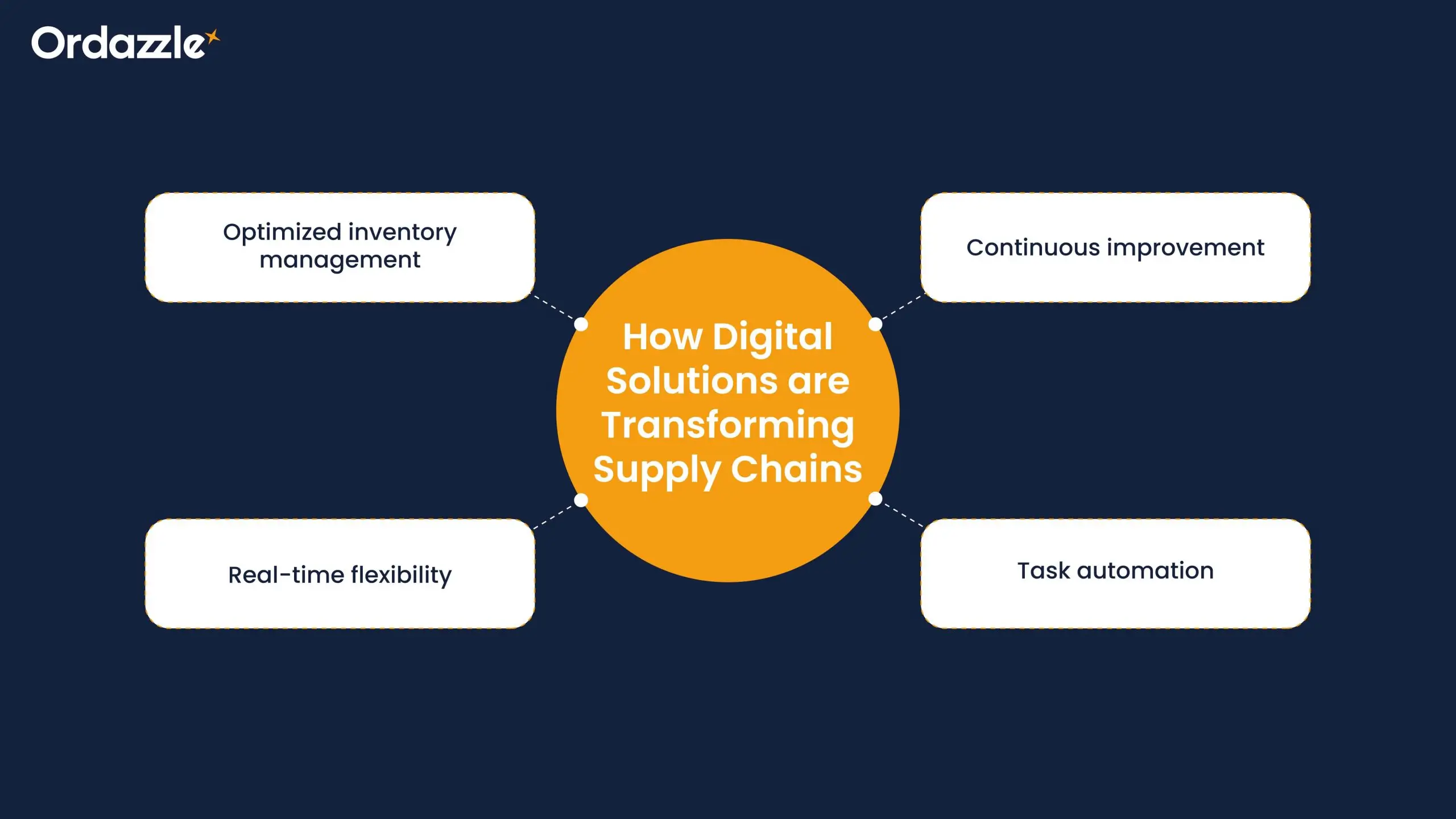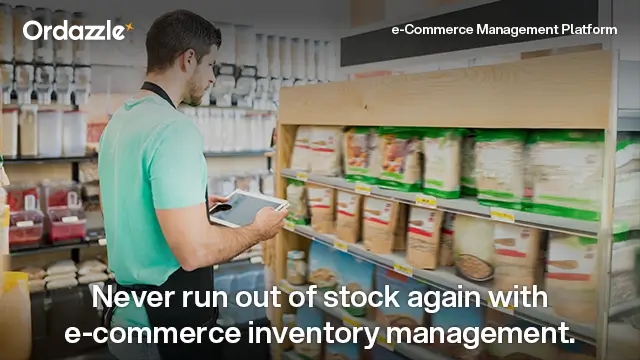How Digital Logistics Can Help you Revamp your Supply Chain

Although it’s old news now, the effect of the COVID-19 pandemic can still be felt through the global supply chains.
It put a spotlight on how international supply chains depend on cross-border trade. But more than that, it highlighted the fact that companies that still had traditional logistics processes in place fell behind too quickly, and had to adopt digital logistics to scale and make decisions faster.
Now, it has turned from a trend to a norm. It’s become a key to streamlining logistics planning, keeping up with evolving customer expectations and behaviours, and automating repetitive tasks.
Let’s explore digital transformation in logistics, what makes it different from traditional processes, how it’s transforming supply chains, and how Ordazzle’s logistics management solutions can help you achieve this transition.
What is Digital Logistics?
Essentially, digital-driven logistics includes digitization and automation of processes related to the movement of goods. With end-to-end digitization, there’s an opportunity to eliminate pen and paper-based repetitive manual efforts and set them on autopilot.
Today, businesses have access to a huge bunch of cloud-based, IoT-driven, and AI/ML-enabled digital logistics solutions that can even embed blockchain technology to leverage the full power of digital solutions to streamline supply chain management.
Here are some of the business areas that digital-based logistics have an impact on:
- Transportation management
- Inventory management
- Warehousing
- Supply chain forecasting and analytics
- Customer notifications
- Real-time shipment tracking
ALSO READ: The AI Advantage: Enhancing Supply Chains and Logistics
How Digital Solutions are Transforming Supply Chains

Let’s face it; businesses that have made the transition to digital supply chains have a real competitive advantage over those still stuck in traditional logistics management.
Here are some capabilities that an e-Commerce solution provider like Ordazzle brings to the table in terms of digital supply chain and logistics management:
- Optimized inventory management
The foremost benefit of digitized logistics can be seen in inventory management. Traditionally, logistics management teams didn’t have access to enough data, and neither did they know the internal workings of warehouses.
This prevented them from improving order fulfilment workflows, warehouse receiving processes, and stocking and storing procedures. But with digital logistics, all of this is possible and more.
- Continuous improvement
With real-time visibility into every step and node of the supply chain, teams can quickly identify the root causes of bottlenecks and quickly deploy solutions to eliminate those blockers.
In the case of traditional logistics, every function is siloed, which makes it tough to identify bottlenecks, let alone develop solutions to remove them.
- Real-time flexibility
With digital solutions, you are better poised to adapt to real-time situations than the traditional way. For instance, if you see that a particular product isn’t selling as expected, you can halt its purchase order if you have enough in stock.
Although it sounds very basic, even this level of insight and control isn’t possible the traditional way, as you lack the very basic visibility and flexibility to halt orders and check inventory levels.
- Task automation
Businesses can put many critical processes on autopilot, like restocking inventory with digital logistics to avoid problems like stockouts.
Also, traditional logistics includes a lot of repetitive data entry across multiple systems, a pain point that gets eliminated when you have an automated system. In short, it helps save time, money, and resources.
What To Look For In A Digital Logistics Solution?
Most retail and e-Commerce businesses have shifted to digital logistics management solutions.
However, not every solution is the same. Some may be more inclined to your preferences, be it budget-wise or feature-wise.
But how do you make that decision? Well, here are some factors you can look out for when making a choice.
- Integrations
You may already have 5-6 tools making up your tech stack. But if they’re disparate, it’ll create more chaos than order. Therefore, you should make sure the digital logistics solution you have integrates all other tools so that your order and customer information move effortlessly across all platforms.
- User experience
Ease of use is an important factor to consider when going for a logistics solution. Because, at the end of the day, any difficulty in software usage can eliminate all the efficiencies offered by the solution and create more confusion.
The best thing to do is opt for a product demo and go through all the functionalities of the platform to gauge user-friendliness and intuitiveness.
- Data quality
All your insights are based on the quality of the data that you have. So, choose a platform that not only collects the correct data but also helps you analyse and visualize it efficiently. Only then can you make an informed decision regarding your logistics.
For example, an e-Commerce solution provider like Ordazzle offers real-time inventory data that allows you to make accurate demand forecasting and inventory decisions.
- Customer support
The digital logistics solution you choose has a direct impact on your customer experience. Ensure that the solution you go with has dedicated account managers so that you have a point of contact to solve any logistics challenges that occur while shipping your products.
Wrapping Up
Digital is the way to go for e-Commerce and retail brands where efficiency and customer satisfaction are concerned. But making the shift by yourself is easier said than done. If you have an in-house logistics management solution, you’ll need to train your entire team to use the digital tools effectively.
With Ordazzle, switching to digital logistics can happen seamlessly. Ordazzle’s holistic tech-enabled platform enables you to leverage all the advantages of digitised logistics without having to rack up too much brain on what solution to go for.
Get in touch with us and make the transition today!


